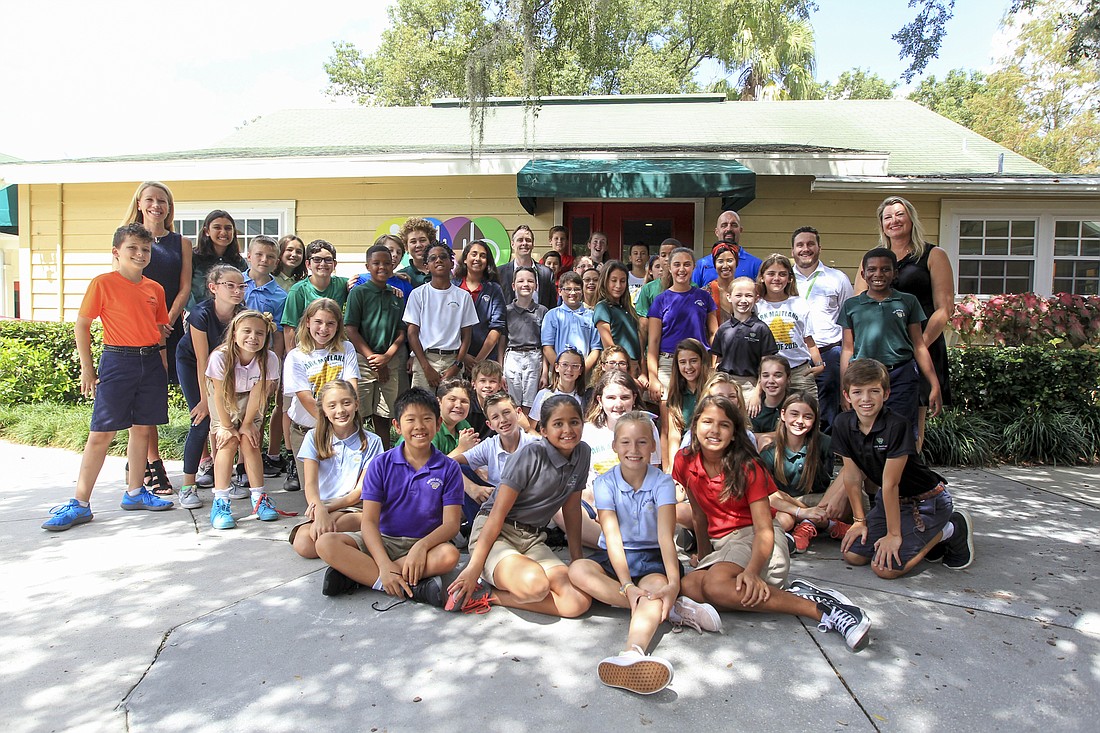- January 26, 2025
-
-
Loading

Loading

The air was filled with pomp and circumstance at Park Maitland School Sept. 27 as students and teachers gathered at the school’s new Innovation Hub.
Students made ceremonial cuts on different portions of the red ribbon draped across the front of the building, helping to officially open the facility.
The opening of the “iHub” and its technology-based, hands-on learning links the school’s traditional curriculum with forward-thinking processes, said Head of School Cindy Moon.
“Park Maitland is a 50-year-old institution, yet innovation has been — we like to say — a longstanding tradition at our school,” Moon said. “So while we highly regard our rich traditions of certain types of teaching and learning, we are always looking to be on the forefront of the latest and the greatest as far as what is educationally researched and necessary for children for 21st-century learning.”
The iHub will serve students in the school’s Tinkering Lab and Maker Space classes, and it also will be the home of fifth- and sixth-grade STEAM (science, technology, engineering, arts and mathematics) labs, a third-grade science classroom and the new media center.
The Tinkering (grades K4 to second grade) and Maker Space (third to sixth grade) Labs have become the two big STEAM classes at Park Maitland School, because they help teach students to develop design thinking, Moon said.
“They might think — especially at the very young age — that they’re just building, but they’re actually having to think through a complete process,” Moon said. “They have to plan, and write their plans up — sort of like an architect. They have to work with the group, they critically think because a lot of times their plans don’t work so they have to try it again and again, and then they have an end product.”
It was from these classes that teacher — now lower school administrator and fifth/sixth grade design thinking teacher — Evelyn McCulloch decided last year to give her students a real challenge: design a facility in which they could actually learn.
From there, McCulloch’s then-fifth-graders set to work designing what they thought would be an ideal space to learn.
“They have to plan, and write their plans up — sort of like an architect. They have to work with the group, they critically think because a lot of times their plans don’t work so they have to try it again and again, and then they have an end product.”
- Cindy Moon
They met with architects, engineers and designers, who talked with students about their own jobs, before helping them through the process of designing a space.
One of those who helped students plan the facility was Scott Nichols, founder of Graphaus Design in Orlando. Nichols, who has a child at Park Maitland School, thought it would be a great chance to show kids of different school subjects often intertwine with one another.
“Part of the challenge with implementing a new program like this is the push and pull between traditional education and new education,” Nichols said. “It was a great opportunity for this to merry well with innovation and design thinking.
“There was a quote from Steve Jobs,” he said. “He said, in his opinion, the biggest drivers for innovation is when there has been an intersection of the humanities, liberal arts and technology, because technology on its own is not sufficient.”
After finishing their designs, and with funding from Nobel Learning Communities — which owns the school — the students’ hard work paid off as their plans were brought to life at Park Maitland School.
Along with being able to hold classes, the iHub also has equipment that allows students to explore robotics and coding. There is also a green screen over in one corner that allows budding student journalists a chance to work on their news anchoring chops.
The immersive space of technology and learning is of vital importance, because current and future job markets are constantly changing with the arrival of new technology and innovation, Moon said.
“Learning is so very different … it’s ever-changing every day, so preparing a child for a job today wont exist when they graduate — every five years there are new jobs,” Moon said. “What we do — as educators — is prepare them to be collaborators, communicators, creators and innovators, because (then) they will be successful human beings.”